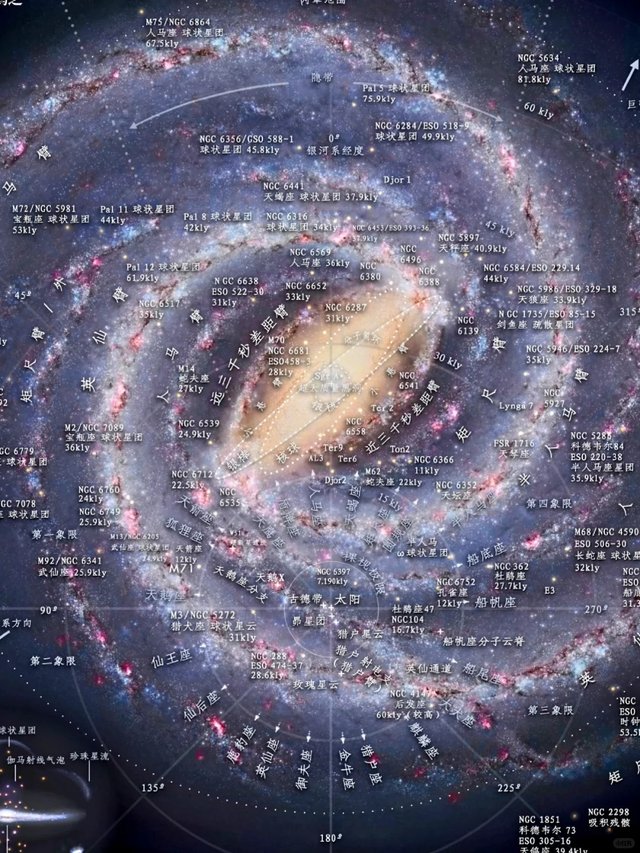The Milky Way galaxy is a spiral galaxy containing the solar system. The diameter ranges from 100000 to 180000 light-years. The Milky Way galaxy has approximately 100 to 400 billion stars and at least this number of planets. The solar system is located at a radius of approximately 27000 light-years (8.3 kpc) from the center of the Milky Way, at the inner edge of the spiral arm of the Orion Arm, which is one of the spiral shaped gathering places for gas and dust. At the position of the sun, the orbital period is approximately 240 million years. From the perspective of Earth, the Milky Way appears as a circular band around the celestial sphere, as it is viewed from the inside of a disk like structure. A star forms a nuclear sphere within a range of approximately 10 kilometers from its core, and one or more rods radiate outward from the sphere. The center of the Milky Way is marked as a strong radio source and is a supermassive black hole named Sagittarius A *. Stars and gases over a large distance orbit around the center of the Milky Way at a speed of approximately 220 kilometers per second. This constant velocity violates Kepler dynamics, thus suggesting that there is a large amount of mass in the Milky Way that does not emit or absorb electromagnetic radiation. These masses are called "dark matter". Approximately 95% of the universe is expected to be dark matter. Compared to the extragalactic reference frame, the entire Milky Way galaxy is moving at a speed of approximately 600 kilometers per second (372 miles per second). The oldest star in the Milky Way is almost as old as the universe itself, so it may have formed during the dark period shortly after the Big Bang.
Figure 2: The Sun (including Earth and the solar system) is located near the inner edge of the Orion Arm, in the local interstellar cloud, about 7.94 ± 0.42 kiloseconds away from the center of the Milky Way. Our spiral arm is approximately 6500 light-years away from the neighboring Perseus arm. Our sun and solar system are located in what scientists call the habitable zone of galaxies.
Figure 3 shows the X-ray Milky Way composed of photos taken by the Chandra X-ray Observatory. Figure 4: The large arch of the Milky Way tilts across the night sky (a panoramic view taken using fish eyes at the Parina Observatory in Chile). The bright Jupiter is located in the constellation Sagittarius, facing north of the Milky Way.
The future of the Milky Way:
Currently, observations suggest that the Andromeda galaxy is moving towards the Milky Way at a speed of 300 kilometers per second and may collide with the Milky Way in 3-4 billion years. But even if a collision does occur, the sun and other stars will not collide with each other. These two galaxies may take billions of years to merge into elliptical galaxies. According to the discovery by the US Observatory, the edge of the Smith Cloud has already interacted with the gas in the Milky Way and pushed away the gas surrounding the galaxy. The Milky Way will exert a tidal force on it, causing it to split. Approximately 20 to 40 million years later, the core of Smith Cloud will collide with the disk of the Milky Way.
